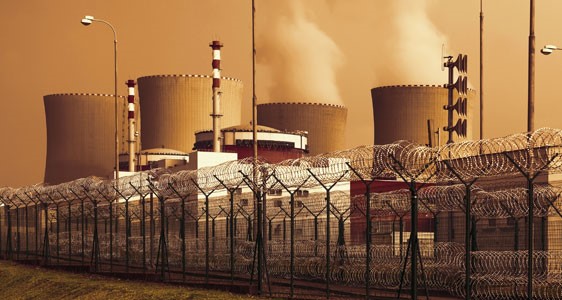
Few will argue against the usefulness that video surveillance provides; even the most basic video system acts as a deterrence to, and record of, criminal activity. For critical industrial facilities, surveillance provides the ability to ensure smooth operations by promoting appropriate safety procedures and minimizing potential accidental damage to equipment and workers. Designing an effective video solution for many industrial and manufacturing facilities requires some finesse due to their wide variety of potentially hazardous environments. For example: gas turbines, chemical processing plants, and oil refineries routinely involve potentially explosive or corrosive materials, and many outdoor facilities such as shipping yards, harbors, and military outfits may experience extreme weather conditions.
There is nothing stopping a facility from installing standard, run-of-the-mill cameras or equipment in an outdoor or otherwise harsh environment; some integrators may place a camera within a temperature-controlled enclosure since it’s more cost-effective. However, there are hidden costs that are not immediately apparent to the end user. For instance, if a camera is installed in an area that is exposed to direct sunlight for long hours, or in a very hot and dry climate, additional cooling components become necessary, increasing the demand for power. Additionally, accumulation of dust and other particles that may eventually clog vents further impact the internal temperatures, potentially causing cameras to overheat and effectively decreasing their lifespan.
For extreme settings, setting up “explosion-proof” or “explosion protected” equipment is best for hazardous areas where flammable gases may be present. Despite the name, these surveillance cameras are not actually designed to withstand an explosive blast but rather to prevent one from occurring by monitoring operations around these combustible materials, which can reduce workers from having to potentially risk their lives by entering dangerous areas in the facility. If a manufacturing process has gone awry, smart video technologies can shorten emergency response time by verifying and triggering alarms.
|
"Smart video technologies can shorten emergency response times by verifying and triggering alarms." |
“Ruggedizing” equipment for environments that may subject cameras to the elements or shock and vibration can be accomplished by implementing enclosures that are resistant to specific materials. For example, if a camera needs to be set up near a harbor or other outdoor location that regularly exposes saltwater spray or mist to the equipment, a stainless steel enclosure adequately protects it and any moving parts within. (Such enclosures should also have at least an IP67 waterproof rating or higher.) Impact-resistant polycarbonate casings also add a considerable amount of protection, especially from trespassing thieves who may attempt to destroy or vandalize surveillance equipment. Likewise, shock resistance can help during extreme weather conditions, such as hail storms, hurricanes, and tornadoes.
For decades, industrial facilities and other critical infrastructure have always sought protection against terrorist attacks and crime, but modern surveillance equipment can provide an enhanced level of detail to workers when making judgment calls during a crisis. A decision of whether one should send his colleague(s) to investigate a site of concern can turn into a life and death situation in a matter of minutes. Using real-time video verification can not only help analyze system efficiency, but also assist in scenarios where taking a more proactive approach to potentially dangerous situations can save lives.

